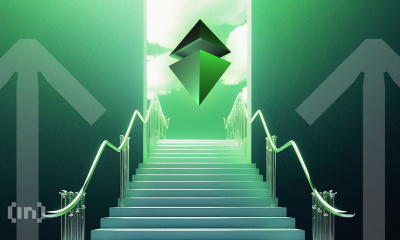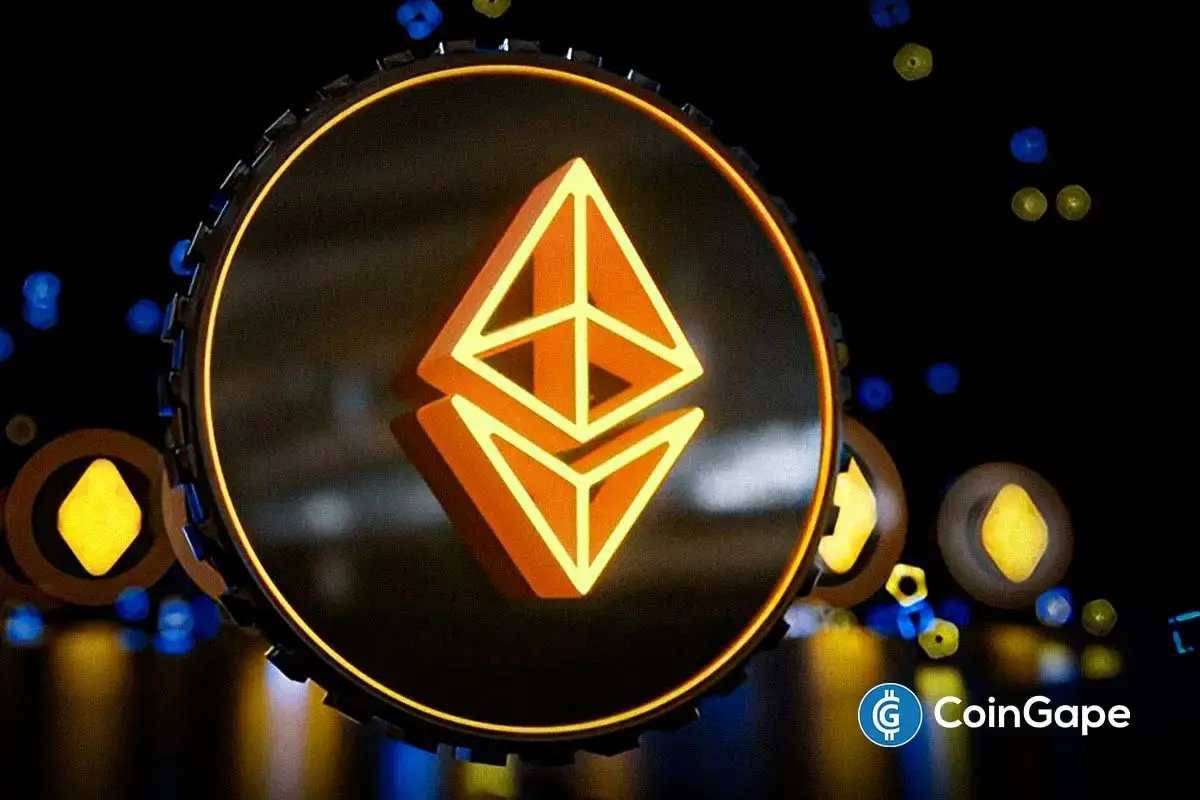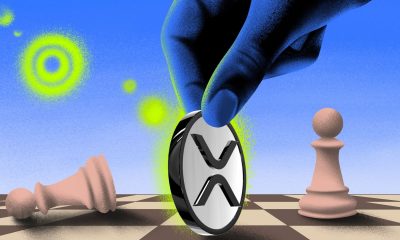Market
Onyxcoin Buyers Drive Strong Demand as XCN Surges Past $0.01

Onyxcoin has surged by nearly 30% in the past 24 hours, riding the wave of a broader crypto market rally.
But beyond the market-wide momentum, on-chain data suggests that XCN’s spike, its strongest in over a month, is driven by genuine demand for the altcoin.
Onyxcoin Rallies, But There Is a Catch
XCN’s double-digit rally has been accompanied by a surge in its daily trading volume. This totals $128 million at press time, rocketing 480% over the past day.
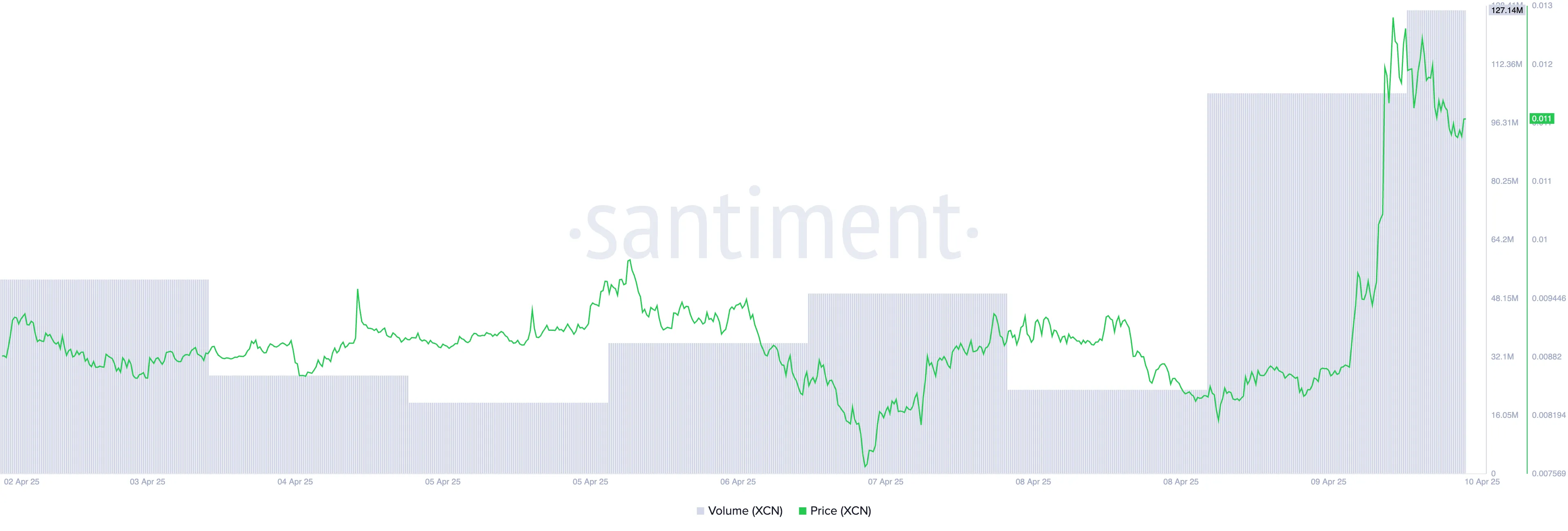
When an asset’s price and trading volume spike simultaneously, it signals strong market interest and momentum. This means more participants are actively trading XCN and validating its price movement.
Moreover, the daily count of active addresses that have traded XCN today has climbed to a 60-day high of 1,646.
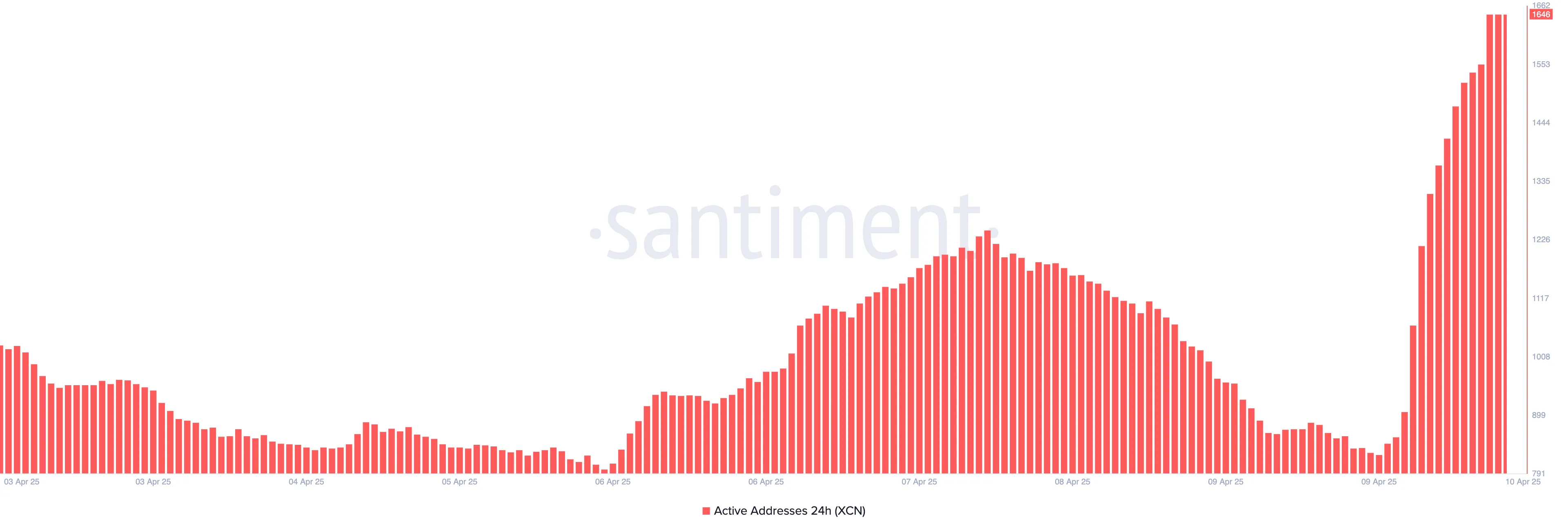
This spike in active addresses reflects growing retail and possibly institutional interest in XCN. More wallets transacting the token typically suggests broader network participation and confidence, which can serve as a strong bullish signal for the asset.
However, not all traders share this bullish sentiment. In the XCN futures market, the outlook is persistently bearish, as reflected by the token’s negative funding rate. This is at a two-month low of -0.18% at press time.

The funding rate is a periodic fee exchanged between long and short traders in perpetual futures to keep the contract price in line with the spot price.
When an asset’s funding rate is negative like this, short traders pay long traders. This indicates bearish sentiment and that more XCN traders are betting on the price to fall.
XCN Clears Key Barrier as Accumulation Grows — Is $0.015 Next?
Apart from the broader market recovery, the price rally is also supported by a visible uptick in on-chain user engagement, signaling that XCN traders are not just following hype but are actively accumulating.
On the daily chart, XCN has broken above the crucial $0.01 resistance level—a price point it struggled to break for two weeks. If the rally persists, XCN’s price could climb to $0.015, a high it last reached on March 5.
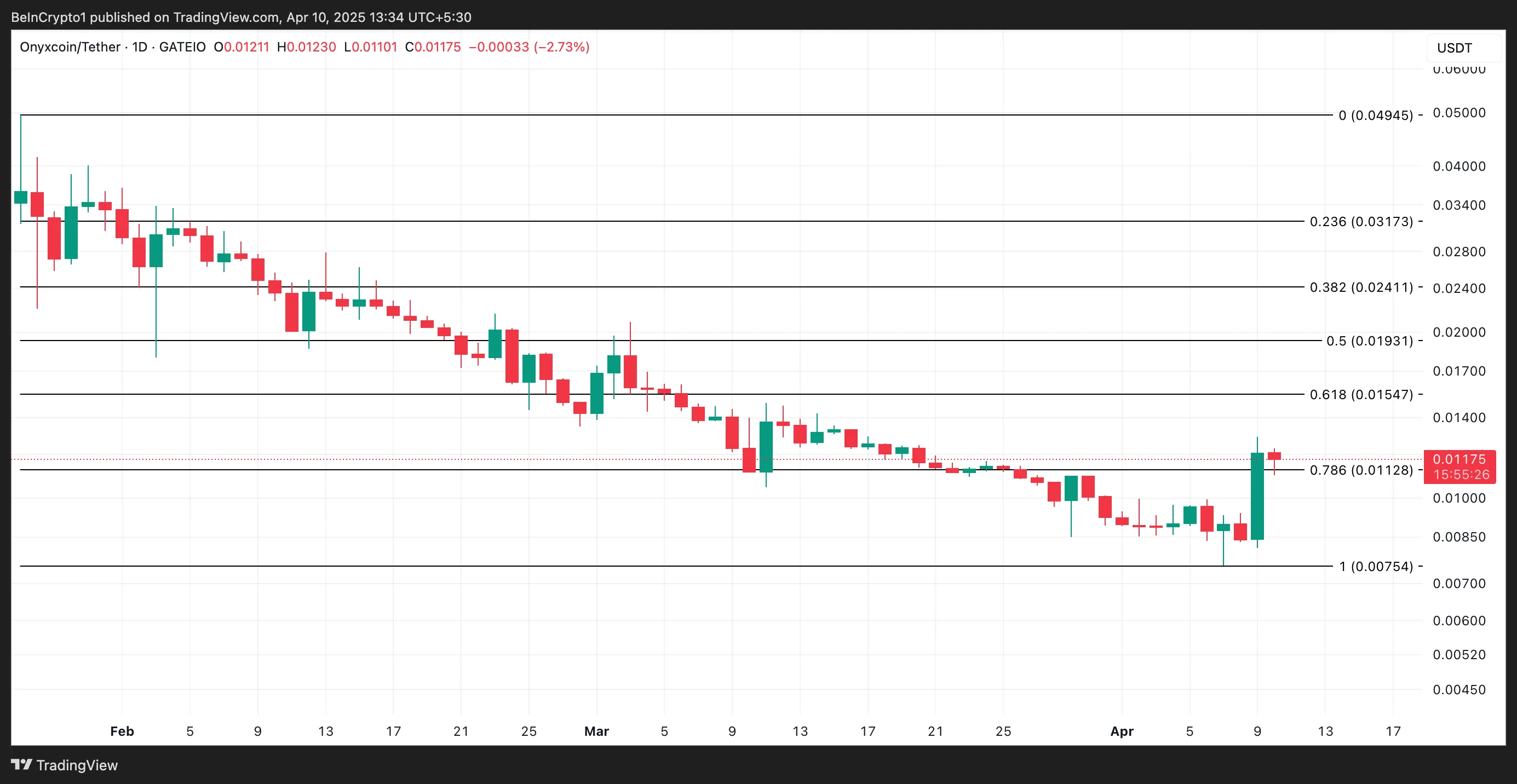
However, if market participants begin profit-taking, XCN could shed its recent gains and fall below the $0.011 support toward $0.0075.
Disclaimer
In line with the Trust Project guidelines, this price analysis article is for informational purposes only and should not be considered financial or investment advice. BeInCrypto is committed to accurate, unbiased reporting, but market conditions are subject to change without notice. Always conduct your own research and consult with a professional before making any financial decisions. Please note that our Terms and Conditions, Privacy Policy, and Disclaimers have been updated.
Market
Ethereum’s Buterin Criticizes Pump.Fun for Bad Social Philosophy
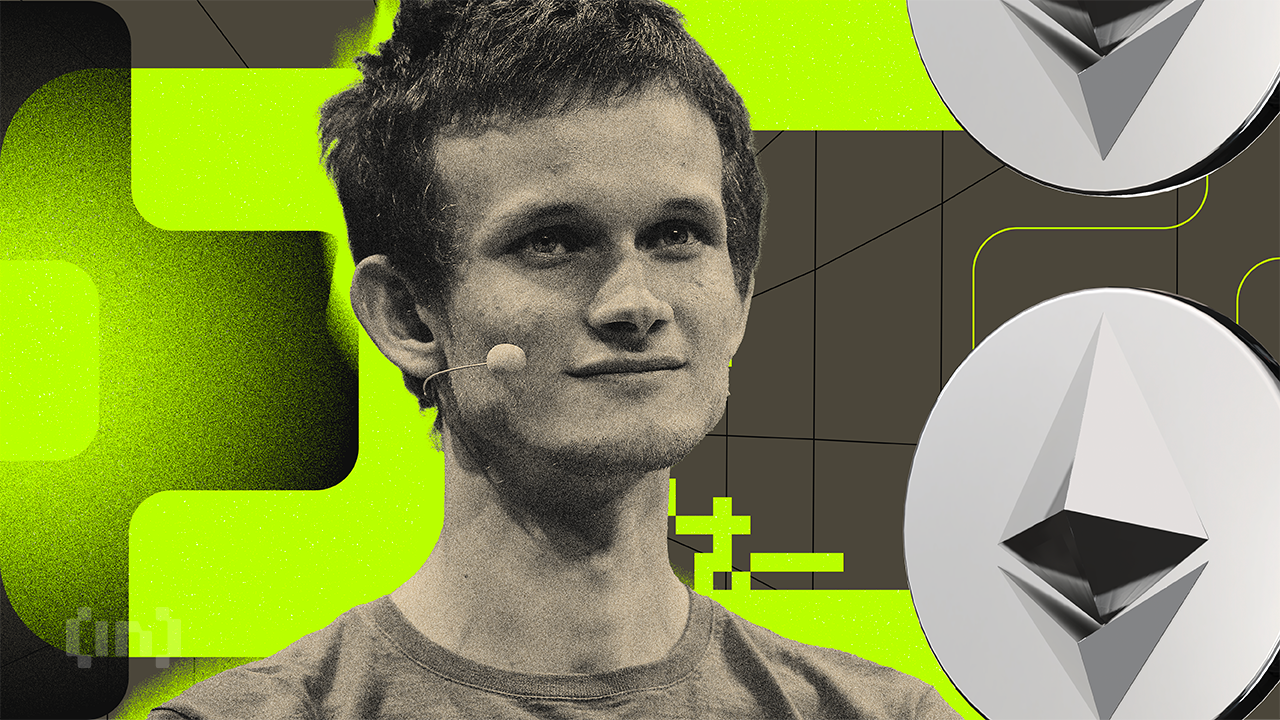
Ethereum co-founder Vitalik Buterin believes that the direction of blockchain applications often mirrors the intentions and ethics of their creators. He cites that projects like Pump.fun are derived from bad social philosophy.
In a recent discussion, he highlighted how the impact—positive or negative—of crypto projects is shaped by the values driving their development.
Buterin Says Pump.fun and Terra Reflect What Not to Build in Crypto
Buterin praised a handful of decentralized applications that align with Ethereum’s long-term vision. These include Railgun, Farcaster, Polymarket, and the messaging app Signal.
On the flip side, he criticized platforms such as Pump.fun, Terra/Luna, and the collapsed FTX exchange, describing them as harmful examples of what not to build.
“The differences in what the app does stem from differences in beliefs in developers’ heads about what they are here to accomplish,” Buterin explained.
Railgun stood out as a key example. While it offers privacy features similar to Tornado Cash, it goes a step further by implementing Privacy Pools.
This system—co-developed by Buterin—allows users to stay anonymous while still proving their funds haven’t come from illicit sources.
Other projects Buterin praised include Farcaster, a decentralized social network protocol, and Polymarket, a crypto-based prediction platform.

In the past, he noted that tools like Polymarket could move beyond betting on elections and serve as useful mechanisms for improving decision-making in governance, media, and even scientific research.
Meanwhile, projects like Pump.fun—designed for launching memecoins on Solana—received harsh criticism.
Previously, the Ethereum co-founder had warned about schemes that prioritize hype over substance, such as Terra/Luna and FTX. He has also consistently urged the crypto space, especially DeFi, to build with ethical intent and long-term utility in mind.
How Developer Ethics Shape Blockchain’s Future
To explain his views on Ethereum’s unique development path, Buterin compared it to C++, a general-purpose programming language.
Unlike C++, Ethereum is only partially general-purpose. Many of its core innovations, like account abstraction or the shift to proof-of-stake, rely heavily on developers’ commitment to Ethereum’s broader mission.
“Ethereum L1 is not quite in that position: someone who doesn’t believe in decentralization would not add light clients, or FOCIL, or (good forms of) account abstraction; someone who doesn’t mind energy waste would not spend half a decade moving to PoS… But the EVM opcodes might have been roughly the same either way. So Ethereum is perhaps 50% general-purpose,” Buterin said.
Buterin furthered that Ethereum apps are around 80% special-purpose. Because of this, the ethical framework and goals of the people building them play a critical role in shaping what the network becomes.
Disclaimer
In adherence to the Trust Project guidelines, BeInCrypto is committed to unbiased, transparent reporting. This news article aims to provide accurate, timely information. However, readers are advised to verify facts independently and consult with a professional before making any decisions based on this content. Please note that our Terms and Conditions, Privacy Policy, and Disclaimers have been updated.
Market
FARTCOIN Is Overbought After 250% Rally – Is the Bull Run Over?

The Solana-based meme coin FARTCOIN has emerged as an unlikely outperformer over the past month. The altcoin has defied the broader market troubles and surged by nearly 250% in the past 30 days.
However, buyer exhaustion could soon set in, potentially triggering a wave of profit-taking among FARTCOIN holders eager to lock in gains.
FARTCOIN Enters Overbought Zone
FARTCOIN’s triple-digit rally has pushed its price above the upper band of its Bollinger Bands (BB) indicator, a sign that the meme coin is overbought.
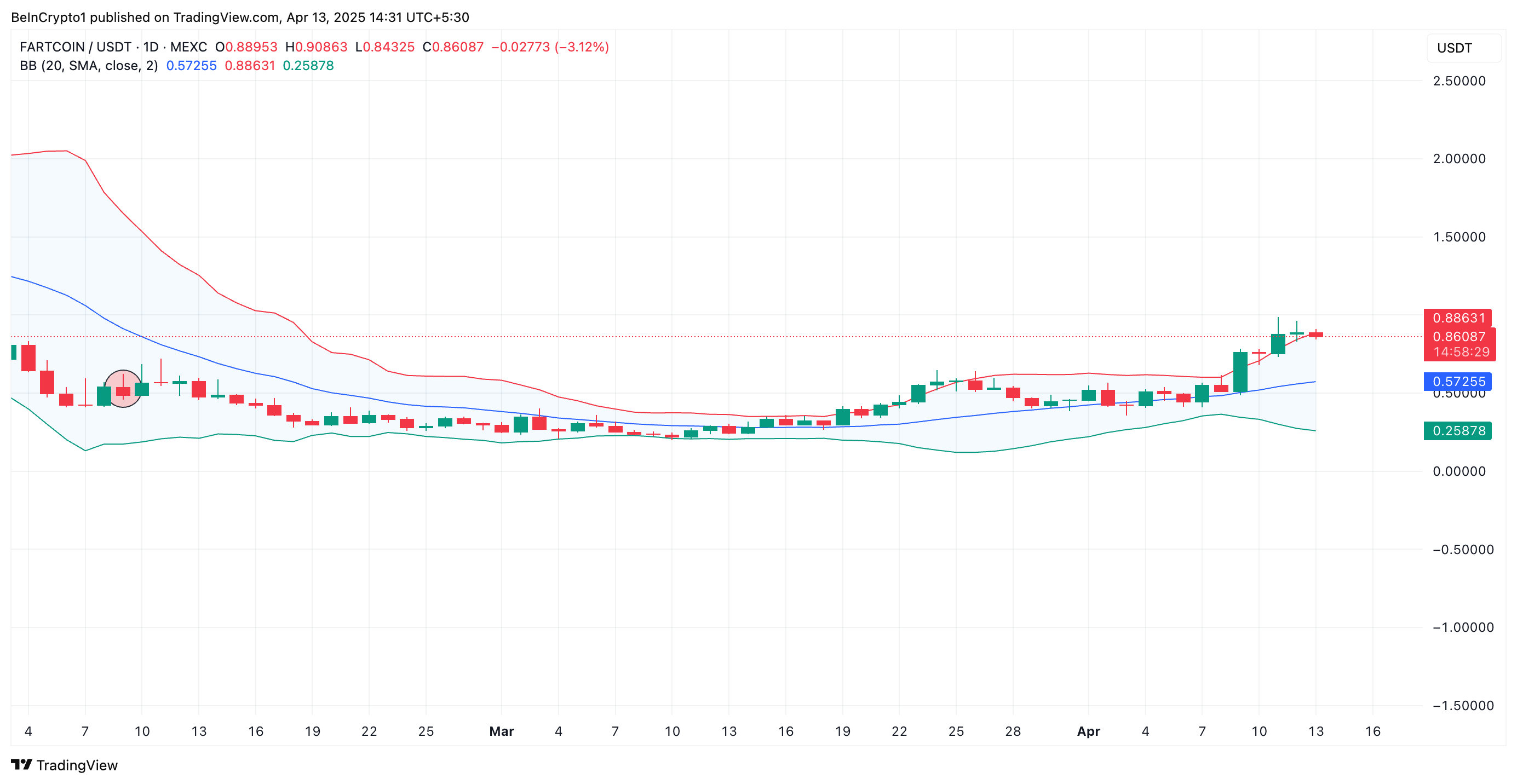
The BB indicator identifies overbought or oversold conditions and measures an asset’s price volatility. It consists of three lines: a simple moving average (middle band) and two bands (upper and lower) representing standard deviations above and below the moving average.
When the price breaks above the upper band, it means the asset’s current value is moving significantly away from its average, making it overbought and due for a price correction.
This pattern suggests that FARTCOIN’s current price level may not be sustainable, increasing the likelihood of a near-term pullback.
Moreover, readings from the token’s Relative Strength Index (RSI) confirm its nearly overbought status. At press time, this momentum indicator rests at 69.09.
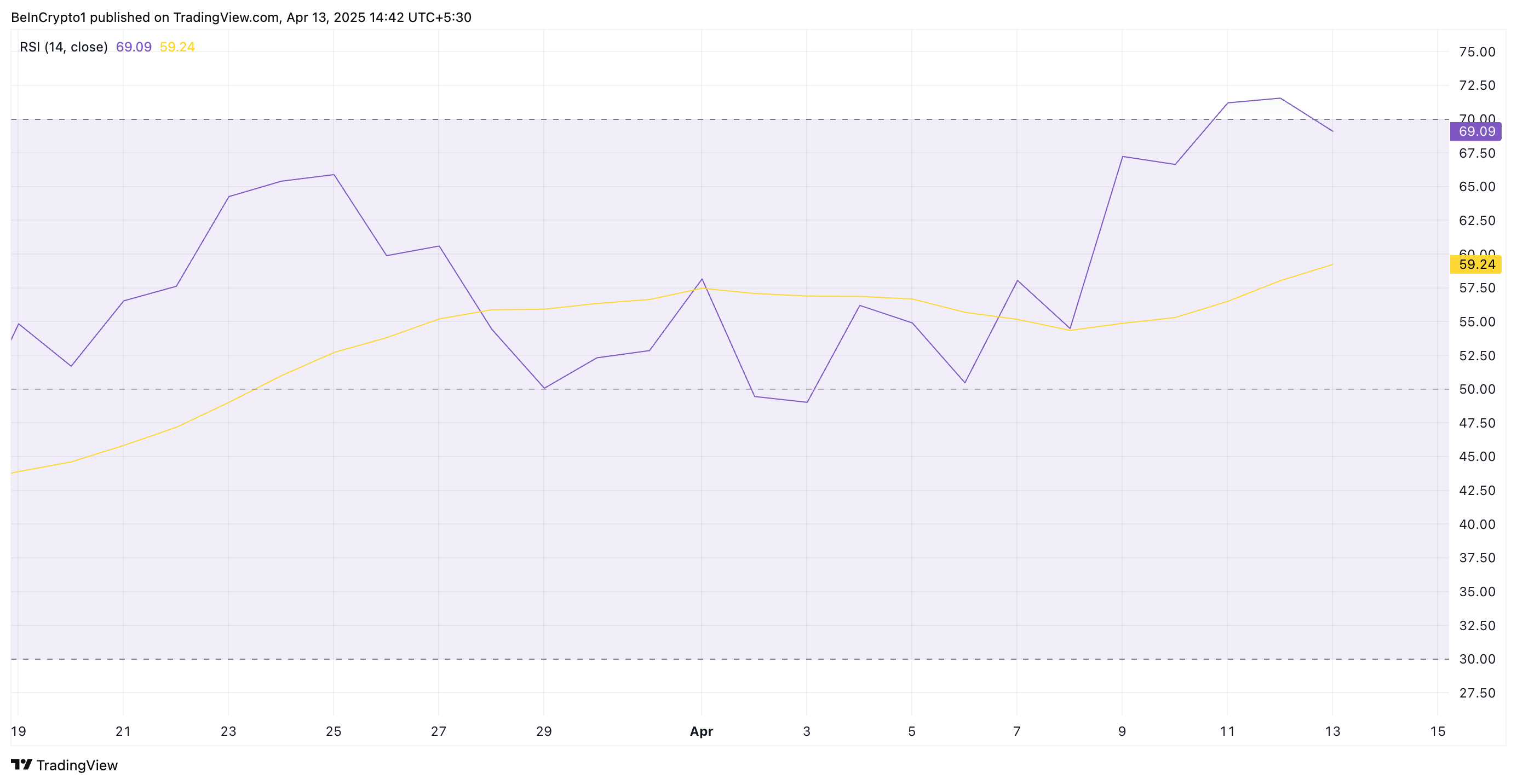
The RSI indicator measures an asset’s overbought and oversold market conditions. It ranges between 0 and 100. Values above 70 suggest that the asset is overbought and due for a price decline, while values under 30 indicate that the asset is oversold and may witness a rebound.
At 69.09, FARTCOIN’s RSI signals that the meme coin is nearly overbought. Its upward momentum may be weakening, and a price correction could be near.
Will It Hit $1.16 or Slip Back to $0.37?
If the current momentum fades, FARTCOIN could face a short-term correction that causes it to shed some recent gains. In that scenario, the Solana-based asset could retest support at $0.74.
Should it fail to hold, the downtrend strengthens and could continue toward $0.37.
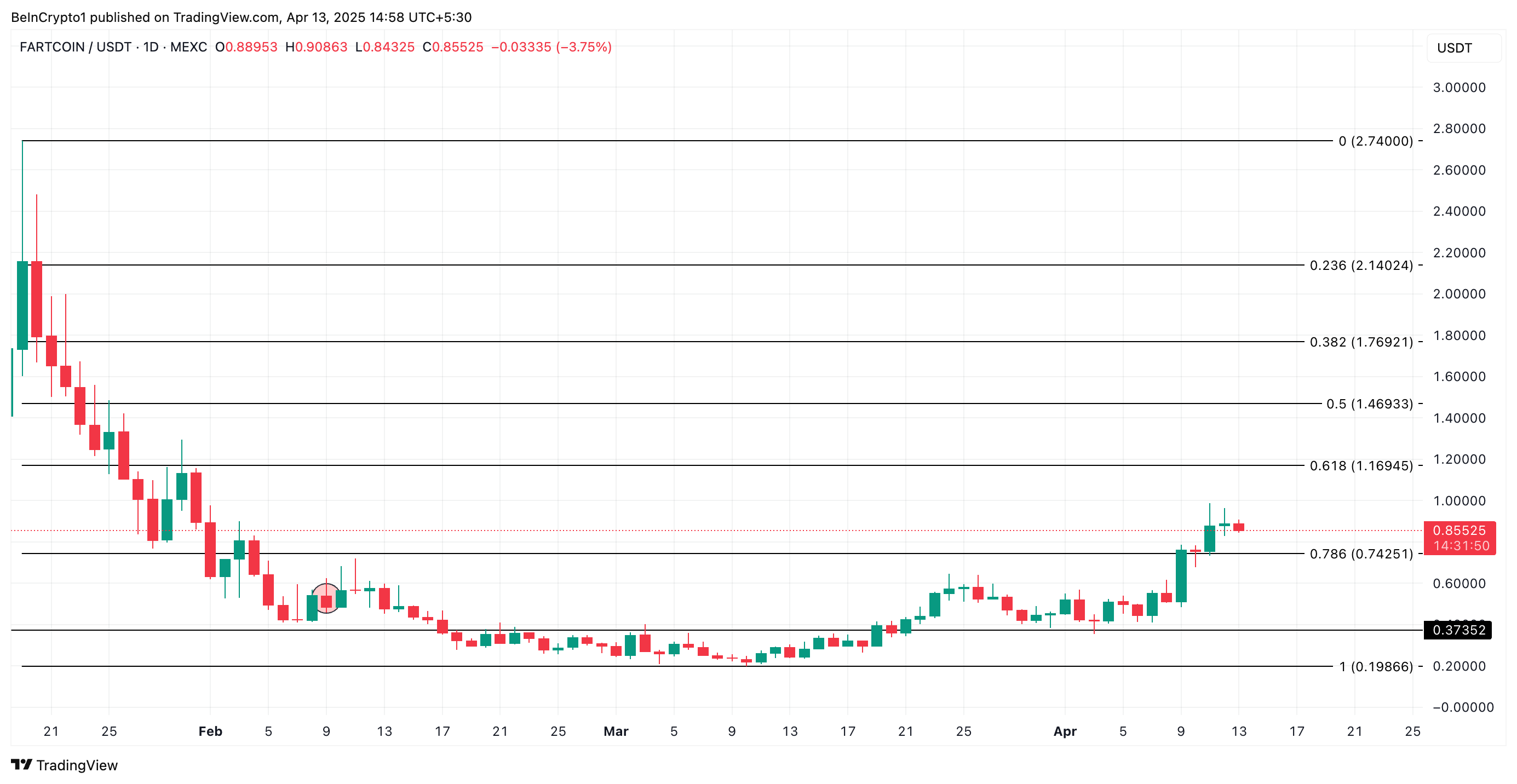
However, if FARTCOIN maintains its uptrend, it could rally to $1.16.
Disclaimer
In line with the Trust Project guidelines, this price analysis article is for informational purposes only and should not be considered financial or investment advice. BeInCrypto is committed to accurate, unbiased reporting, but market conditions are subject to change without notice. Always conduct your own research and consult with a professional before making any financial decisions. Please note that our Terms and Conditions, Privacy Policy, and Disclaimers have been updated.
Market
Binance Users Targeted by New Phishing SMS Scam
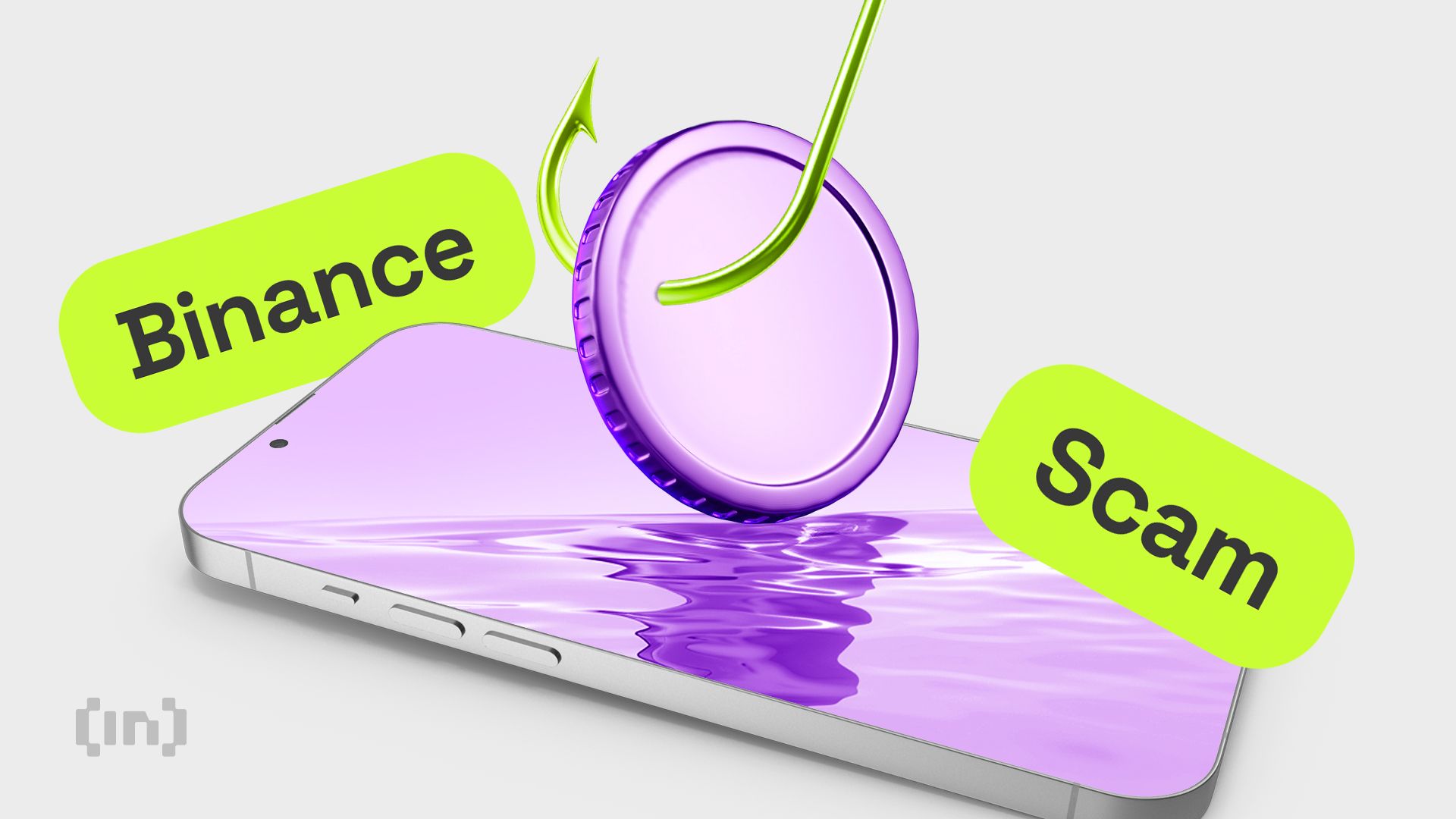
Dozens of Binance users report receiving an alarming wave of phishing text messages that appear genuine. These messages even match the phone number and SMS inbox they regularly see for official Binance updates.
Almost all phishing texts reviewed by BeInCrypto have the same wording and format. This leads us to believe that a particular threat actor or criminal group is targeting Binance users with a sophisticated phishing campaign.
Targeted Phishing Campaign Against Binance Users
The messages often warn of users’ unauthorized account activities—such as a newly added two-factor authentication device.
Most commonly, the phishing messages follow up with a text about an unexpected Binance API pairing with Ledger Live. The recipients are then urged to call a provided phone number.
Some targeted users claim these texts show up in the same thread as their legitimate Binance notifications. This creates confusion and prompts them to engage. Investigations by BeInCrypto reveal a surge in consumer complaints on X (formerly Twitter).

Many users say they were caught off guard because the scam messages originated from the same sender ID used by Binance for authentic notifications.
Meanwhile, the criminals behind this campaign appear to be capitalizing on publicly reported leaks of Binance user data on dark web forums.
Last month, an estimated 230,000 combined user records from Binance and Gemini reportedly appeared for sale on the dark web. Security experts suggest these leaks came through phishing attacks rather than direct system breaches.
The suspected group of threat actors is likely using leaked information—names, phone numbers, and emails—to craft targeted messages that give the illusion of legitimacy.
Also, the pattern seen in the phishing attempts typically involves an urgent “not you?” query. It prompts recipients to call an embedded phone line instead of simply clicking a link.
This method bypasses the more common scenario of phishing links in SMS.
Binance is Extending Anti-Phishing Code to SMS
In an exclusive email to BeInCrypto, Binance’s Chief Security Officer, Jimmy Su, responded to these findings. Su confirmed the company’s awareness of the escalating smishing incidents.
“We are aware of smishing scams on the rise where phishing scammers are impersonating us and other legitimate senders via SMS. These scams appear to be more authentic, tricking users into revealing sensitive information, clicking into phishing links, or making a transfer that result in loss of assets.” Binance’s Chief Security Officer told BeInCrypto.
Su further disclosed that Binance has extended its Anti-Phishing Code to SMS. This feature was originally offered for emails.
The code is a user-defined identifier that appears in official Binance messages, making it easier for recipients to recognize genuine notifications and avoid impostors.
“By incorporating a unique Anti-Phishing code into Binance SMS messages, we are making it significantly harder for scammers to deceive our users,” Su said.
The Anti-Phishing Code has been rolled out to all licensed jurisdictions where Binance operates.
Also, according to Binance, both registered and non-registered users have reported receiving suspicious texts.
Therefore, attackers might be leveraging databases that include phone numbers of individuals not actively using Binance.
BeInCrypto advises users to adopt additional measures, such as verifying transactions directly through Binance’s official app or website, using multifactor authentication, and never sharing credentials over the phone.
Reporting suspicious messages to Binance’s support team is strongly advised.
Individuals are encouraged to confirm official communications by checking for the Anti-Phishing Code and to carefully scrutinize any request to call phone numbers provided in unsolicited messages.
Disclaimer
In adherence to the Trust Project guidelines, BeInCrypto is committed to unbiased, transparent reporting. This news article aims to provide accurate, timely information. However, readers are advised to verify facts independently and consult with a professional before making any decisions based on this content. Please note that our Terms and Conditions, Privacy Policy, and Disclaimers have been updated.
-
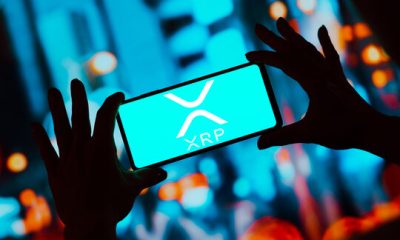
 Market21 hours ago
Market21 hours agoXRP Price To Hit $45? Here’s What Happens If It Mimics 2017 And 2021 Rallies
-

 Ethereum21 hours ago
Ethereum21 hours agoEthereum (ETH) Consolidates Within Tight Range As Key Support Level Forms
-
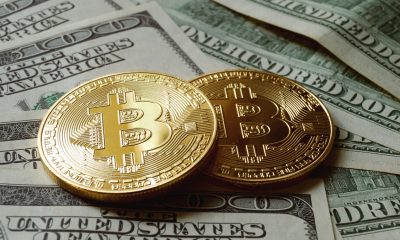
 Bitcoin19 hours ago
Bitcoin19 hours agoBitcoin Price Volatility Far Lower Than During COVID-19 Crash — What This Means
-

 Ethereum16 hours ago
Ethereum16 hours agoEthereum Slips Below ‘Mayer Multiple’ Level That Preceded Last Rally To $4,000
-
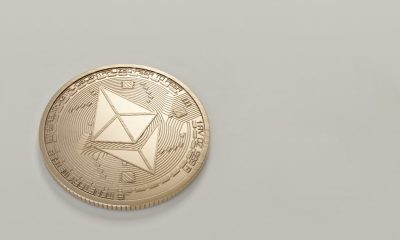
 Ethereum10 hours ago
Ethereum10 hours agoEthereum Inverse Head And Shoulders – The Pattern That Could Spark A Reversal
-
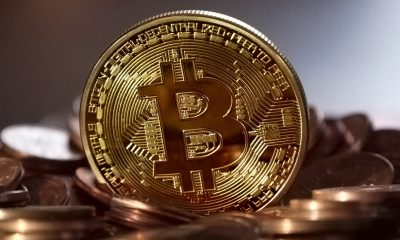
 Bitcoin7 hours ago
Bitcoin7 hours agoScottish School Lomond Pioneers Bitcoin Tuition Payment In The UK
-
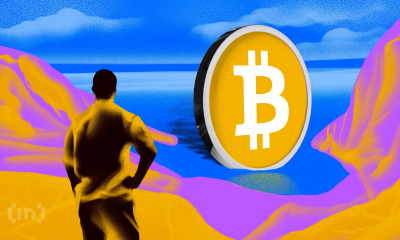
 Market7 hours ago
Market7 hours agoNew York Proposes Bill to Accept Bitcoin Payments for Tax
-
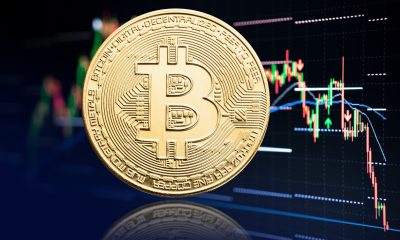
 Bitcoin5 hours ago
Bitcoin5 hours agoCryptoQuant CEO Says Bitcoin Bull Cycle Is Over, Here’s Why






